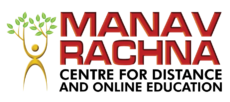Unit 1: Introduction
Macroeconomics
L1: Introduction to macroeconomics
L2: Difference between micro economics and macro economics
L3: Macroeconomic schools of thought- Classical and Keynesian economy
Assignment
Unit 2: National Income
Assignment
L4: Circular flow of national income
L5: Aggregates of national income
Assignment of Aggregates of national Income
Assignment
L6: Methods of calculating national income
L7: Numericals
Assignment
L8: National income and economic welfare
Unit 3: Closed Economy in the Short Run: The Keynesian Model
L9: Keynesian model of income determination
L10: Consumption function
L11: Saving & Investment functions
L12: Concepts of MPC, MPS, APC and APS
L13: Equilibrium and the determination of Income (AD-AS and S-I approaches)
Equilibrium and the determination of Income (AD-AS and S-I approaches)
L14: Simple investment multiplier: Concept and working
Simple investment multiplier: Concept and working
L15: Paradox of thrift
Unit 4: Macro Economic Equilibrium and Policy
Macro economic policies
L16: Full Employment Equilibrium
Assignment of Full Employment Equilibrium
L17: Under and Over Employment Equilibrium
Assignment of Under and Over Employment
L18: Inflationary and deflationary gaps
Assignment of Inflationary and deflationary gap
l19: Role of monetary policy
L20: Role of fiscal policy
Unit 5: Aggregate Demand and Aggregate Supply Model
L21: Aggregate demand and aggregate supply in the short run
L22: Aggregate demand and aggregate supply in the long run
L23: Shifts in aggregate demand curve
L24: Shifts in aggregate supply curve
L25: Inflation: Meaning, types
Assignment
L26: Inflation: Causes & Control
L27: Unemployment: Meaning and types
L28: Phillips curve
Unit 6: Product Market and Money Market: IS-LM Model
L29: Introduction to IS-LM Model
L30: The IS curve: derivation and interpretations for a two sector model
L31: Numericals
L32: The LM curve: derivation and interpretations for a two sector model
L33: Numerical
L34: Simultaneous equilibrium
L35: Numerical
L36: Monetary policy in the IS-LM framework
L37: Monetary policy in the IS-LM framework
L38: Fiscal policy in the IS-LM framework
L39: Fiscal policy in the IS-LM framework
PPT on Fiscal policy and IS-LM


